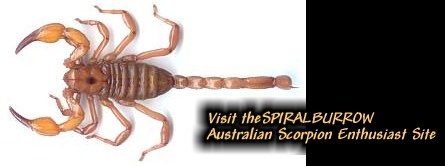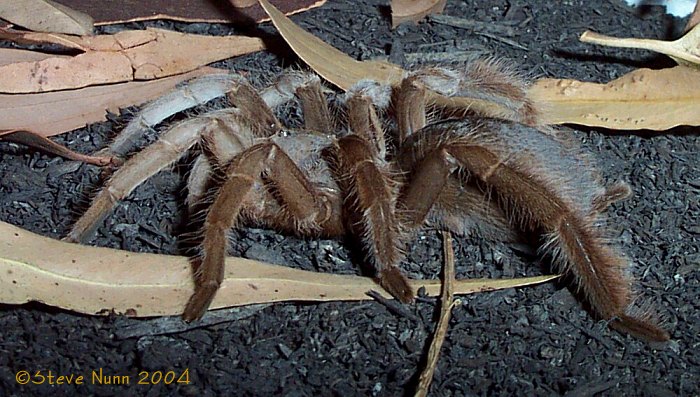

Image: Selenotypus plumipes AUSTRALIA`S TRUE "BIRD EATER", Selenotypus. Selenotypus plumipes Pocock 1895
Selenotypus plumipes were first described in 1895 by R. I. Pocock at Major`s Creek, just southwest of Townsville. These are an arid species, inhabiting parts of northwest Queensland.
Of all the Australian species, Selenotypus are the one theraphosid genera that can truly be classed as bird eaters. In The Emu, a naturalist magazine from the early 1900`s, were published reports of Selenotypus plumipes feasting on young chickens. It happened that the owners of a cattle station in western north Queensland had noticed one of a brood of chickens had disappeared and upon further inspection noticed drag marks leading fifty feet away to where the dead chick was located. When the owners of the property tried to retrieve the chicken, they noticed quite some resistance and were shocked to see a large spider (later identified as S.plumipes) trying in vain to pull the entire chick down itís burrow. A photo accompanied the article and showed a spider with a 5-inch span (the specimen wasnít stretched out, just in a typical stance) and a young chick that was 3-4 times the size of the spider. Also, on a neighbouring station, another Selenotypus had killed a newly hatched Guinea-Fowl chicken and had pulled it some distance down itís burrow.
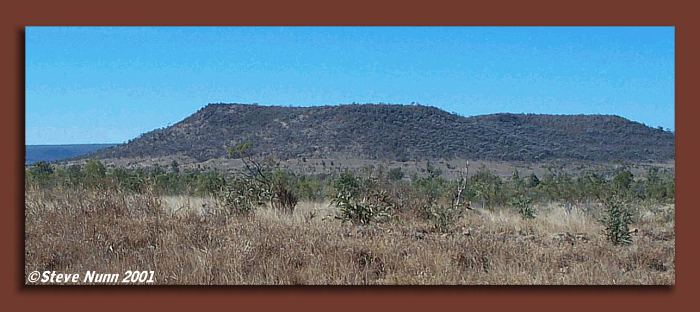
Preferred tablelands habitat of Selenotypus plumipes.
The typical diameter for Selenotypus plumipes burrows is 4-5cm, with a depth of about 30-50cm in black or red soil areas. It seems that these spiders have developed a unique way of keeping heat out of their burrows during bush fires. They have been observed covering the entrance holes to their burrows with the shells of dead bush snails. Selenotypus burrows are similar in most aspects to Selenocosmia stirlingi, but are generally larger in diameter (about 50mm).
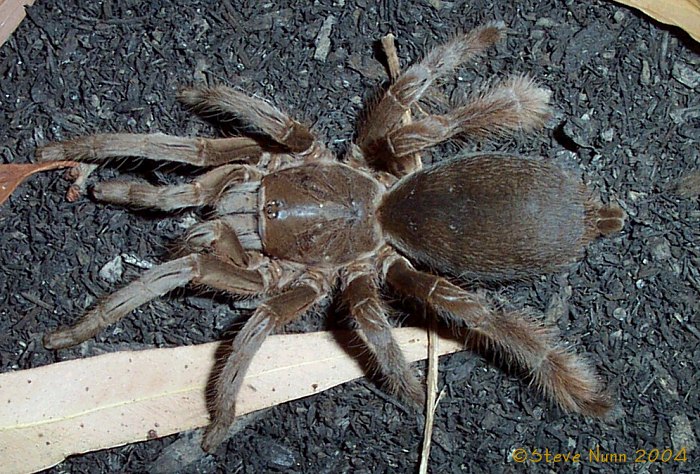
Selenotypus plumipes are one of Australia's arid zone Theraphosids. They are quickly identified by legs no. 4, which are longer than legs no.1.
A close up view of the rear legs of S.plumipes. From this angle the dense piloerect bristles on the metatarsi and tibia (unique to the genus Selenotypus) are easily seen.
Penultimate instar male Selenotypus plumipes. It is during this instar that sexual dimorphism of this species is noticed.
These spiders are obligate burrowers, favouring black and red soil areas.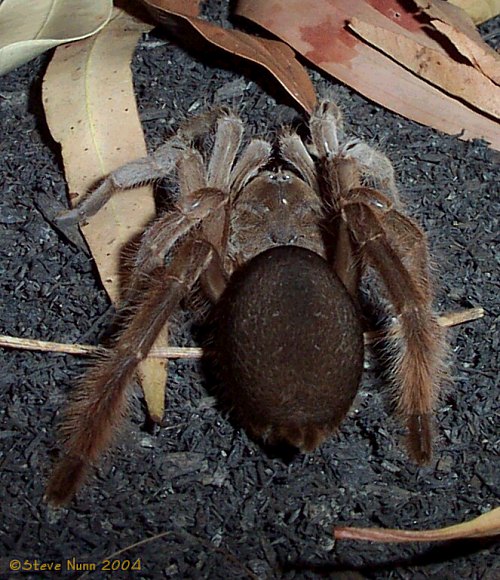
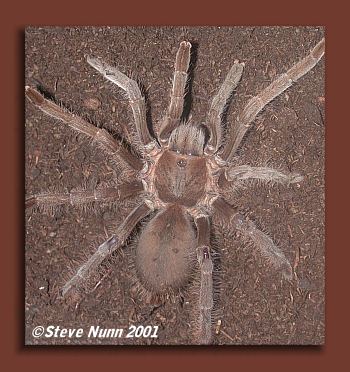
This spider has been referred to as The Australian Featherleg. This is in a way quite appropriate as itís Latin name suggests (plumi plumidge or feathers, and Pes- from Pes Pedes(?), or the foot.) They are a very large species, attaining leg spans in excess of 160mm. The fangs of this genus seem larger than the other Australian genera, up to 10mm. They are a fairly passive spider, as far as Australian tarantulas go, but when it comes to feeding time, itís a whole new story. This probably stems from the fact that Selenotypus plumipes come from harsh semi- arid country and are very opportunistic feeders.
